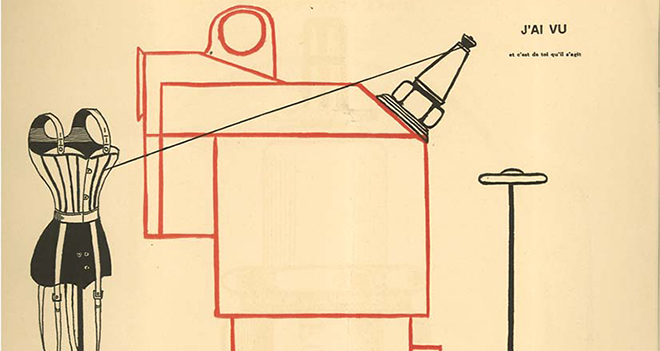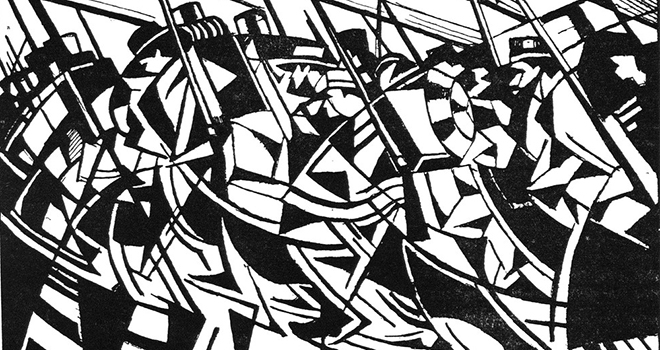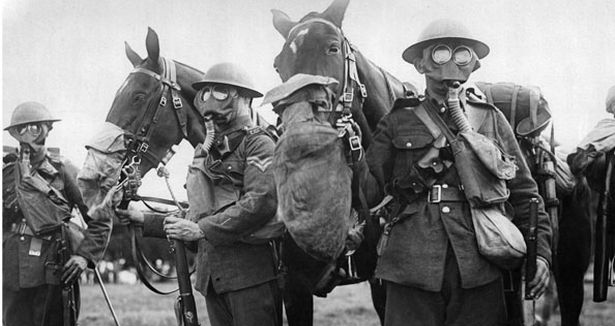http://dl.lib.brown.edu/repository2/repoman.php?verb=render&id=128895796...

"Opinions." The Crisis: A Record of the Darker Races. Vol. 10 No. 2. June, 1915. pp. 69-71, 75-77.
I'm looking at three short pieces in the Opinion section of this issue. One appears under the heading "The Birth of a Nation," and the other two under "The Great War." Since my primary field is film studies, my interest was naturally piqued by seeing a contemporary reaction in this magazine to the landmark, famously controversial film The Birth of a Nation. Not surprisingly, the author of the piece heavily criticizes the film for its well-known and (ultimately) highly damaging racist distortions of history. (Interestingly, from my point of view at least, the picture is referred to always a "Dixon's film play," admitting no mention of D.W. Griffith, already by that time perhaps the most famous film director in the world.) The piece does not, however, precisely invoke or question the concept of racial superiority, although it is certainly present in the film. The author acknowledges that Dixon conceives narrowly of race relations in terms of "the sex problem of 'Aryan and African,'" which is certainly true (p. 69), but more fraught with notions of racial hatred and superiority in our post-Nazi age than it would have been at the time. The article goes on to combat the film not by debating the social unacceptability of miscegenation, but in purely historical terms: "To present the members of the race as women chasers and foul fiends is a cruel distortion of history. Bad things occurred, but what man will say that the outrages of black on white equalled in number the outrages of white on black?" (p. 69-70) Sensible, and yet these two excerpts are merely as close as the author comes to approaching a moral or philosophical question of whether or not all men are created equal, the issue which we traditionally think of when we hear the word "racism." The outrage remains couched in terms of factual misrepresentation rather than philosophical misconception. The question of spiritual equality, of "superiority," seems less pervasive in the race debate than in the gender debate.
Several pages after this article, however, in the pieces on the Great War, the notion of "superiority" is raised again in an interesting way. Booker T. Washington's first paragraph should be quoted in full: "It is assumed that the dark articles skinned people, who are now classed along with the Slavs as inferior peoples, will infallibly imitate the example of the superior races; that they will plot and plan and secretly contrive means for overcoming those who stand above them, meanwhile interpreting every action of their rivals in the worst possible light and unconsciously employing every possible means to incite fear and hate, so that at last, when their hour finally strikes, the lesser peoples will be ready and willing to rise up and throw off the protection which the stronger races have imposed upon them. In that case the fear and hate which they have cherished secretly in their hearts will give them courage to be as ruthless in their rebellion as the superior races are likely to be in suppressing it. And they will do this in order to convince themselves and the rest of the world that they are really not inferiors, but the equals, if not the superiors, of the white races." (p. 75-76) Needless to say, Washington goes on to question this assumption, which is an exact description of the white anxieties depicted in The Birth of a Nation, to which the Ku Klux Klan (in the film's version of history) are a response. Washington sees through this view, and could be describing how the film functions as propaganda when he writes that this view "is the excuse for the harsh measures that it seems necessary to use now and then to keep the lesser peoples in their lesser places." (p. 76) Washington's piece touches the ugly assumptions which underly and shape The Birth of a Nation's representation of history, that one race is naturally and inherently superior to others. W.E.B. DuBois, in the piece which follows, links World War I to an imperialist agenda of racial oppression: "We must fight the Chinese, the laborer argues, or the Chinese will take our bread and butter. We must keep Negroes in their places, or Negroes will take our jobs. All over the world there leaps to articulate speech and ready action that singular assumption that if white men do not throttle colored men, then China, India, and Africa will do to Europe what Europe has done and seeks to do to them." (p. 77) War, in The Birth of a Nation and in DuBois' argument, is seen as a struggle for the right to exert an idea of racial superiority, "by the simple process of getting on top and holding the other down." (p. 76)







